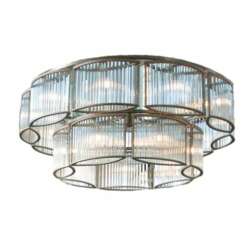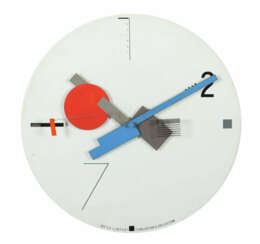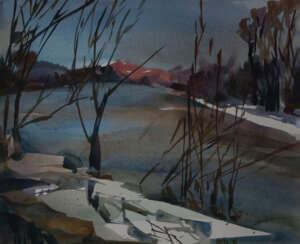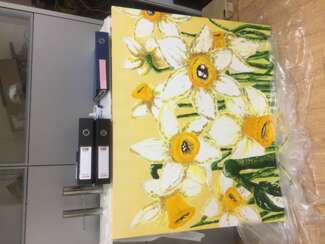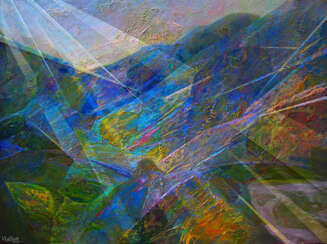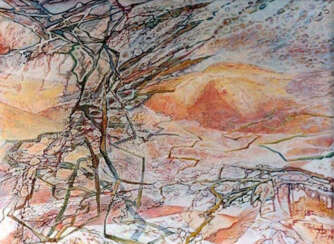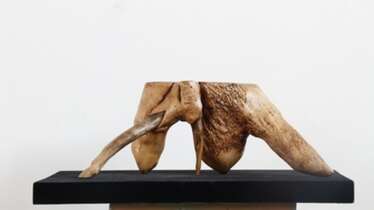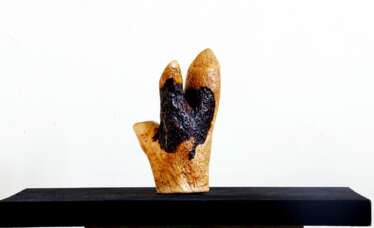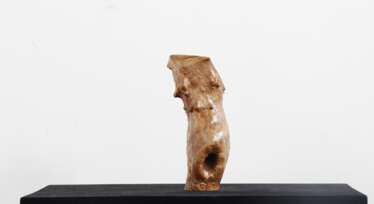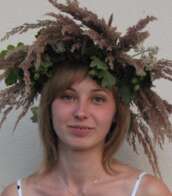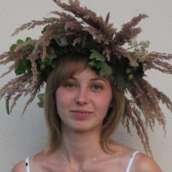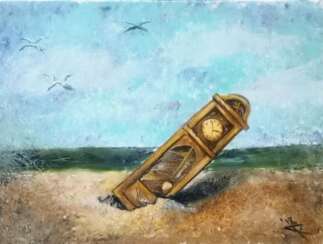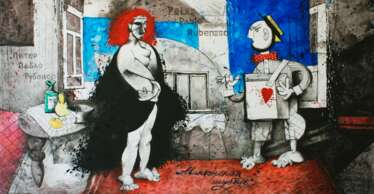744 Items by auctions and galleries:
postmodern
V
Anton Sorata (b. 1986)  Shop Sorata Anton
Shop Sorata Anton

Anton Sorata
09.09.1986
Russia
Жажда, вкус, пламя, цвет, страсть - это то, что движет сюжетами моих картин. Это огромная вселенная совершенно разных реальностей, возможно, не совсем понятных человеку на уровне рационализма, но их можно почувствовать.

Artist shop
Sorata Anton
Russia
Number of products: 7
Утро. Игра света.
Alexandr Vlasyuk (b. 1948) 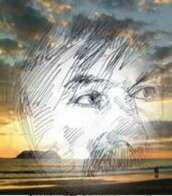 Shop Vlasyuk Alexandr
Shop Vlasyuk Alexandr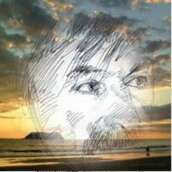

Alexandr Vlasyuk
14.07.1948
Byelorussia
Alexander Vlasyuk
He was born in 1948 in Belarus.
1967-1971-study of the Minsk Art College.
1971-1977 - studies at the Academy of Arts, Minsk, Belarus.
EXHIBITIONS:
1978- Vilnius, Lithuania.
1981-Moscow, Minsk.
1982-Moscow.
1983-1991-series of works in Russia, Bulgaria, Belarus.
1992-2001 - solo exhibitions in the cities of Germany (Bremen, Hanover, Berlin, Wolfenbuttel, Woczlede)
COLLECTIONS:
Embassy of Turkey, Minsk.
Embassy of China, Minsk.
City Hall of Japan, Japan.
Dreitfaltigkeitskirche, Hanover, Germany.
12 paintings in the collection of Georges Carpentier, Amiens, France.
In private collections in Germany, USA, France, Poland, Turkey, Israel, Belarus, Ukraine, Russia.
Awarded with the diploma of the Union of Artists of the USSR for the design project for the design of the Dynamo stadium in Minsk for the Olympics-80.

Artist shop
Vlasyuk Alexandr
Byelorussia
Number of products: 10
Мираж в дюнах
Alexandr Vlasyuk (b. 1948)  Shop Vlasyuk Alexandr
Shop Vlasyuk Alexandr

Alexandr Vlasyuk
14.07.1948
Byelorussia
Alexander Vlasyuk
He was born in 1948 in Belarus.
1967-1971-study of the Minsk Art College.
1971-1977 - studies at the Academy of Arts, Minsk, Belarus.
EXHIBITIONS:
1978- Vilnius, Lithuania.
1981-Moscow, Minsk.
1982-Moscow.
1983-1991-series of works in Russia, Bulgaria, Belarus.
1992-2001 - solo exhibitions in the cities of Germany (Bremen, Hanover, Berlin, Wolfenbuttel, Woczlede)
COLLECTIONS:
Embassy of Turkey, Minsk.
Embassy of China, Minsk.
City Hall of Japan, Japan.
Dreitfaltigkeitskirche, Hanover, Germany.
12 paintings in the collection of Georges Carpentier, Amiens, France.
In private collections in Germany, USA, France, Poland, Turkey, Israel, Belarus, Ukraine, Russia.
Awarded with the diploma of the Union of Artists of the USSR for the design project for the design of the Dynamo stadium in Minsk for the Olympics-80.

Artist shop
Vlasyuk Alexandr
Byelorussia
Number of products: 10
Пять чувств.
Vital Dzemeshkevich (b. 1977)  Shop Dzemeshkevich Vital
Shop Dzemeshkevich Vital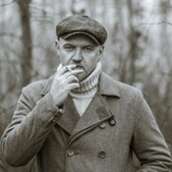

Vital Dzemeshkevich
30.12.1977
Byelorussia
Моё творчество - это терапия создающая благостную внутреннею гармонию, материалом для творчества Вселенная выбрала для меня Дерево, принятие этого материала явило мне новое: взаимосвязь с материалом , наполнение энергией природы , раскрытие сакрального смысла своей сути, создание и расшифровка кодов в познании природы ( природа дерева), совершенство пяти чувств и стремление в приобретении главного шестого чувства.

Artist shop
Dzemeshkevich Vital
Byelorussia
Number of products: 21
Крюк-послание.
Vital Dzemeshkevich (b. 1977)  Shop Dzemeshkevich Vital
Shop Dzemeshkevich Vital

Vital Dzemeshkevich
30.12.1977
Byelorussia
Моё творчество - это терапия создающая благостную внутреннею гармонию, материалом для творчества Вселенная выбрала для меня Дерево, принятие этого материала явило мне новое: взаимосвязь с материалом , наполнение энергией природы , раскрытие сакрального смысла своей сути, создание и расшифровка кодов в познании природы ( природа дерева), совершенство пяти чувств и стремление в приобретении главного шестого чувства.

Artist shop
Dzemeshkevich Vital
Byelorussia
Number of products: 21
После.
Vital Dzemeshkevich (b. 1977)  Shop Dzemeshkevich Vital
Shop Dzemeshkevich Vital

Vital Dzemeshkevich
30.12.1977
Byelorussia
Моё творчество - это терапия создающая благостную внутреннею гармонию, материалом для творчества Вселенная выбрала для меня Дерево, принятие этого материала явило мне новое: взаимосвязь с материалом , наполнение энергией природы , раскрытие сакрального смысла своей сути, создание и расшифровка кодов в познании природы ( природа дерева), совершенство пяти чувств и стремление в приобретении главного шестого чувства.

Artist shop
Dzemeshkevich Vital
Byelorussia
Number of products: 21
Три
Vital Dzemeshkevich (b. 1977)  Shop Dzemeshkevich Vital
Shop Dzemeshkevich Vital

Vital Dzemeshkevich
30.12.1977
Byelorussia
Моё творчество - это терапия создающая благостную внутреннею гармонию, материалом для творчества Вселенная выбрала для меня Дерево, принятие этого материала явило мне новое: взаимосвязь с материалом , наполнение энергией природы , раскрытие сакрального смысла своей сути, создание и расшифровка кодов в познании природы ( природа дерева), совершенство пяти чувств и стремление в приобретении главного шестого чувства.

Artist shop
Dzemeshkevich Vital
Byelorussia
Number of products: 21
Женщина-образ
Vital Dzemeshkevich (b. 1977)  Shop Dzemeshkevich Vital
Shop Dzemeshkevich Vital

Vital Dzemeshkevich
30.12.1977
Byelorussia
Моё творчество - это терапия создающая благостную внутреннею гармонию, материалом для творчества Вселенная выбрала для меня Дерево, принятие этого материала явило мне новое: взаимосвязь с материалом , наполнение энергией природы , раскрытие сакрального смысла своей сути, создание и расшифровка кодов в познании природы ( природа дерева), совершенство пяти чувств и стремление в приобретении главного шестого чувства.

Artist shop
Dzemeshkevich Vital
Byelorussia
Number of products: 21
Древо Жизни.
Vital Dzemeshkevich (b. 1977)  Shop Dzemeshkevich Vital
Shop Dzemeshkevich Vital

Vital Dzemeshkevich
30.12.1977
Byelorussia
Моё творчество - это терапия создающая благостную внутреннею гармонию, материалом для творчества Вселенная выбрала для меня Дерево, принятие этого материала явило мне новое: взаимосвязь с материалом , наполнение энергией природы , раскрытие сакрального смысла своей сути, создание и расшифровка кодов в познании природы ( природа дерева), совершенство пяти чувств и стремление в приобретении главного шестого чувства.

Artist shop
Dzemeshkevich Vital
Byelorussia
Number of products: 21
Осень
Alexandr Vlasyuk (b. 1948)  Shop Vlasyuk Alexandr
Shop Vlasyuk Alexandr

Alexandr Vlasyuk
14.07.1948
Byelorussia
Alexander Vlasyuk
He was born in 1948 in Belarus.
1967-1971-study of the Minsk Art College.
1971-1977 - studies at the Academy of Arts, Minsk, Belarus.
EXHIBITIONS:
1978- Vilnius, Lithuania.
1981-Moscow, Minsk.
1982-Moscow.
1983-1991-series of works in Russia, Bulgaria, Belarus.
1992-2001 - solo exhibitions in the cities of Germany (Bremen, Hanover, Berlin, Wolfenbuttel, Woczlede)
COLLECTIONS:
Embassy of Turkey, Minsk.
Embassy of China, Minsk.
City Hall of Japan, Japan.
Dreitfaltigkeitskirche, Hanover, Germany.
12 paintings in the collection of Georges Carpentier, Amiens, France.
In private collections in Germany, USA, France, Poland, Turkey, Israel, Belarus, Ukraine, Russia.
Awarded with the diploma of the Union of Artists of the USSR for the design project for the design of the Dynamo stadium in Minsk for the Olympics-80.

Artist shop
Vlasyuk Alexandr
Byelorussia
Number of products: 10
Незримый времени полет...
Nataliya Kashubina (b. 1972)  Shop Kashubina Nataliya
Shop Kashubina Nataliya

Nataliya Kashubina
01.06.1972
Ukraine
Родилась и живу в г. Киев, Украина
По образованию инженер. Специального художественного образования не имею. Творчеством занимаюсь с 2015 года. Основные направления - скетчи, акрил, акварель, масляная живопись, .
Посвящаю рисунку и живописи все свободное время. Живопись - это прекрасный способ поделиться с миром счастьем и положительными эмоциями.
Свои работы подписываю псевдонимом - Тата Каминская (Tata Kaminskaya)
Мои работы находятся в частных коллекциях в Украине, Швеции, Швейцарии, Польше.

Artist shop
Kashubina Nataliya
Ukraine
Number of products: 11
Юная балерина
Nataliya Kashubina (b. 1972)  Shop Kashubina Nataliya
Shop Kashubina Nataliya

Nataliya Kashubina
01.06.1972
Ukraine
Родилась и живу в г. Киев, Украина
По образованию инженер. Специального художественного образования не имею. Творчеством занимаюсь с 2015 года. Основные направления - скетчи, акрил, акварель, масляная живопись, .
Посвящаю рисунку и живописи все свободное время. Живопись - это прекрасный способ поделиться с миром счастьем и положительными эмоциями.
Свои работы подписываю псевдонимом - Тата Каминская (Tata Kaminskaya)
Мои работы находятся в частных коллекциях в Украине, Швеции, Швейцарии, Польше.

Artist shop
Kashubina Nataliya
Ukraine
Number of products: 11
Пробуждение
Nataliya Kashubina (b. 1972)  Shop Kashubina Nataliya
Shop Kashubina Nataliya

Nataliya Kashubina
01.06.1972
Ukraine
Родилась и живу в г. Киев, Украина
По образованию инженер. Специального художественного образования не имею. Творчеством занимаюсь с 2015 года. Основные направления - скетчи, акрил, акварель, масляная живопись, .
Посвящаю рисунку и живописи все свободное время. Живопись - это прекрасный способ поделиться с миром счастьем и положительными эмоциями.
Свои работы подписываю псевдонимом - Тата Каминская (Tata Kaminskaya)
Мои работы находятся в частных коллекциях в Украине, Швеции, Швейцарии, Польше.

Artist shop
Kashubina Nataliya
Ukraine
Number of products: 11
Сфера
Alexander Akhanov (b. 1957) 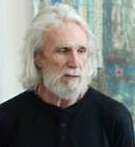 Shop Akhanov Alexander
Shop Akhanov Alexander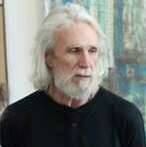

Alexander Akhanov
06.06.1957
Russia
Родился в 1957г. В г. Фролово Волгоградской области.
В 1980 г. Окончил Красносельское училище художественной обработки металлов.
С 1980 г. Участник художественных выставок и проектов.
С 1991 г. по 2012 г. член союза художников РФ.
Участник 1-го аукциона «Сотбис» художников андеграунда Советского Союза г.Москва 1989г.
Работы находятся в коллекциях и собраниях музеев:
- Музей народного и декоративно-прикладного искусства (г. Москва),
- Музей уникальных кукол (г.Москва)
- Костромской объединённый музей-заповедник (г. Кострома),
- Костромской муниципальной галереи (г. Кострома),
- Красносельский музей народного и декоративно-прикладного искусства (п. Красное-на-Волге, Костромской обл.),
- Судиславский краеведческий музей (г. Судиславль, Костромской обл.),
- Нерехтский краеведческий музей (г. Нерехта, Костромская обл),
- Рыбинский объединённый музей-заповедник (г. Рыбинск, Ярославская обл.),
- Ярославский музей истории города (г. Ярославль),
- Даниловская художественная галерея (г.Данилов, Ярославская обл.),
- Суздальский центр народного и декоративно-прикладного искусства (г. Суздаль, Владимирская обл.),
- Томский областной художественный музей (г.Томск),
- Галереи «Союз-Творчество» (г. Москва),
- Свободной вальддорфской школы (г. Лиенц, Австрия),
- Банка «Столичный» (г. Москва),
- «Мосбизнесбанка» (г. Москва),
- Walter Montelvo (США, Калифорния),
- В.Самсонова (г. С-Петербург),
- А.Зарипова (г. Москва),
в частных собраниях в России и за рубежом.
До 2017 жил и работал в Костроме. В настоящее время живу и работаю в г. Данилов, Ярославской области.

Artist shop
Akhanov Alexander
Russia
Number of products: 4
Питер Пауль Рубенссо. Авиньонская шубка.
Alexander Akhanov (b. 1957)  Shop Akhanov Alexander
Shop Akhanov Alexander

Alexander Akhanov
06.06.1957
Russia
Родился в 1957г. В г. Фролово Волгоградской области.
В 1980 г. Окончил Красносельское училище художественной обработки металлов.
С 1980 г. Участник художественных выставок и проектов.
С 1991 г. по 2012 г. член союза художников РФ.
Участник 1-го аукциона «Сотбис» художников андеграунда Советского Союза г.Москва 1989г.
Работы находятся в коллекциях и собраниях музеев:
- Музей народного и декоративно-прикладного искусства (г. Москва),
- Музей уникальных кукол (г.Москва)
- Костромской объединённый музей-заповедник (г. Кострома),
- Костромской муниципальной галереи (г. Кострома),
- Красносельский музей народного и декоративно-прикладного искусства (п. Красное-на-Волге, Костромской обл.),
- Судиславский краеведческий музей (г. Судиславль, Костромской обл.),
- Нерехтский краеведческий музей (г. Нерехта, Костромская обл),
- Рыбинский объединённый музей-заповедник (г. Рыбинск, Ярославская обл.),
- Ярославский музей истории города (г. Ярославль),
- Даниловская художественная галерея (г.Данилов, Ярославская обл.),
- Суздальский центр народного и декоративно-прикладного искусства (г. Суздаль, Владимирская обл.),
- Томский областной художественный музей (г.Томск),
- Галереи «Союз-Творчество» (г. Москва),
- Свободной вальддорфской школы (г. Лиенц, Австрия),
- Банка «Столичный» (г. Москва),
- «Мосбизнесбанка» (г. Москва),
- Walter Montelvo (США, Калифорния),
- В.Самсонова (г. С-Петербург),
- А.Зарипова (г. Москва),
в частных собраниях в России и за рубежом.
До 2017 жил и работал в Костроме. В настоящее время живу и работаю в г. Данилов, Ярославской области.

Artist shop
Akhanov Alexander
Russia
Number of products: 4
ХРАМ НА ЛАДОНИ ~ GOD ON THE PALM
Anatolii Zhamoido (b. 1966)  Shop Zhamoido Anatolii
Shop Zhamoido Anatolii

Anatolii Zhamoido
25.01.1966
Ukraine
1980-1985 -с красным дипломом окончил Харьковское государственное художественное училище.
1988-1991 – художник-оформитель; ХТЗ, Харьков. Создал серию живописных и графических работ. Принимал участие в нескольких художественных и художественно-прикладных выставках (в Харьковском художественном музее, Доме художника, выставках творческого союза «Возрождение», в холле «Росвнешторга», Москве...).
С 1994 г. вместе с несколькими единомышленниками на общественных началах в рамках созданной нами неформальной творческой организации «Детское Акционерное общества самого открытого типа» провожу занятия с детьми и подростками, разрабатываю и воплощаю Новую систему образования.
В 2007 принимал участие в подготовке (как региональный эксперт) и проведении II Международного гуманитарного форума «ВОЗРОЖДЕНИЕ, ОБНОВЛЕНИЕ И РАЗВИТИЕ ЧЕЛОВЕКА» в «Артеке», где провел мастер-класс для ведущих педагогов Украины, России, стран Евросоюза, которые принимали участие в Форуме. Также был приглашен и принимал участие в Первом ежегодном Международном образовательном форуме «АРТЕКОВСКИЕ ДИАЛОГИ». МБФ «Украина 3000», МДЦ «АРТЕК», 17 – 22.09. 2008 г. и EdCamp Ukraine 2015/2016 национальные (не)конференция для школьных педагогов.
1991- 2018 - организатор, участник (и победитель) выставок, форумов, фестивалей, конференций, конкурсов (в том числе международных – США, Германия, Франция, Испания, Россия, Украина…).
Автор и соавтор:
- серии энциклопедий, книг, наборов для творчества, научно-популярных и web-изданий (общий тираж проданных экземпляров – около миллиона),
- документальных и художественных фильмов.
Самым интересным творческим достижением в области изобразительного искусства считаю создание из спичек (палочек для мороженого) оригинальных авторских произведений, макетов памятников архитектуры, коллекции, которая по качеству не имеет аналогов.

Artist shop
Zhamoido Anatolii
Ukraine
Number of products: 7
ХРАМ АФИНЫ ~ ATHENA'S TEMPLE
Anatolii Zhamoido (b. 1966)  Shop Zhamoido Anatolii
Shop Zhamoido Anatolii

Anatolii Zhamoido
25.01.1966
Ukraine
1980-1985 -с красным дипломом окончил Харьковское государственное художественное училище.
1988-1991 – художник-оформитель; ХТЗ, Харьков. Создал серию живописных и графических работ. Принимал участие в нескольких художественных и художественно-прикладных выставках (в Харьковском художественном музее, Доме художника, выставках творческого союза «Возрождение», в холле «Росвнешторга», Москве...).
С 1994 г. вместе с несколькими единомышленниками на общественных началах в рамках созданной нами неформальной творческой организации «Детское Акционерное общества самого открытого типа» провожу занятия с детьми и подростками, разрабатываю и воплощаю Новую систему образования.
В 2007 принимал участие в подготовке (как региональный эксперт) и проведении II Международного гуманитарного форума «ВОЗРОЖДЕНИЕ, ОБНОВЛЕНИЕ И РАЗВИТИЕ ЧЕЛОВЕКА» в «Артеке», где провел мастер-класс для ведущих педагогов Украины, России, стран Евросоюза, которые принимали участие в Форуме. Также был приглашен и принимал участие в Первом ежегодном Международном образовательном форуме «АРТЕКОВСКИЕ ДИАЛОГИ». МБФ «Украина 3000», МДЦ «АРТЕК», 17 – 22.09. 2008 г. и EdCamp Ukraine 2015/2016 национальные (не)конференция для школьных педагогов.
1991- 2018 - организатор, участник (и победитель) выставок, форумов, фестивалей, конференций, конкурсов (в том числе международных – США, Германия, Франция, Испания, Россия, Украина…).
Автор и соавтор:
- серии энциклопедий, книг, наборов для творчества, научно-популярных и web-изданий (общий тираж проданных экземпляров – около миллиона),
- документальных и художественных фильмов.
Самым интересным творческим достижением в области изобразительного искусства считаю создание из спичек (палочек для мороженого) оригинальных авторских произведений, макетов памятников архитектуры, коллекции, которая по качеству не имеет аналогов.

Artist shop
Zhamoido Anatolii
Ukraine
Number of products: 7
Лесное озеро
Sergei Alexandrov (b. 1955)  Shop Alexandrov Sergei
Shop Alexandrov Sergei

Sergei Alexandrov
23.12.1955
Russia
Александров Сергей Николаевич
Родился 23.12.1955г.р. в г. Омске
1973- 1978 учился в Омском Государственном
педагогическом институте
на художественно-графическом факультете.
Участник выставок с 1979 года.
Член Союза Художников России с 1989 года
Мастер Гильдии вертепщиков
Живописец, график, художник театра.

Artist shop
Alexandrov Sergei
Russia
Number of products: 6




